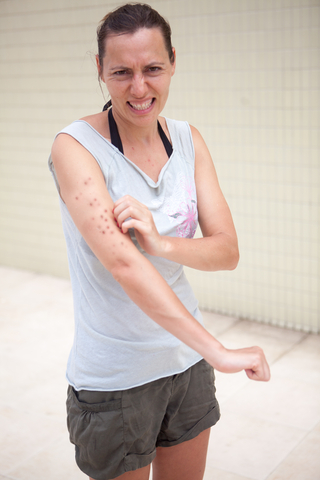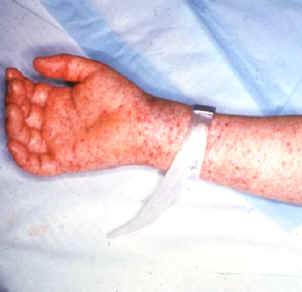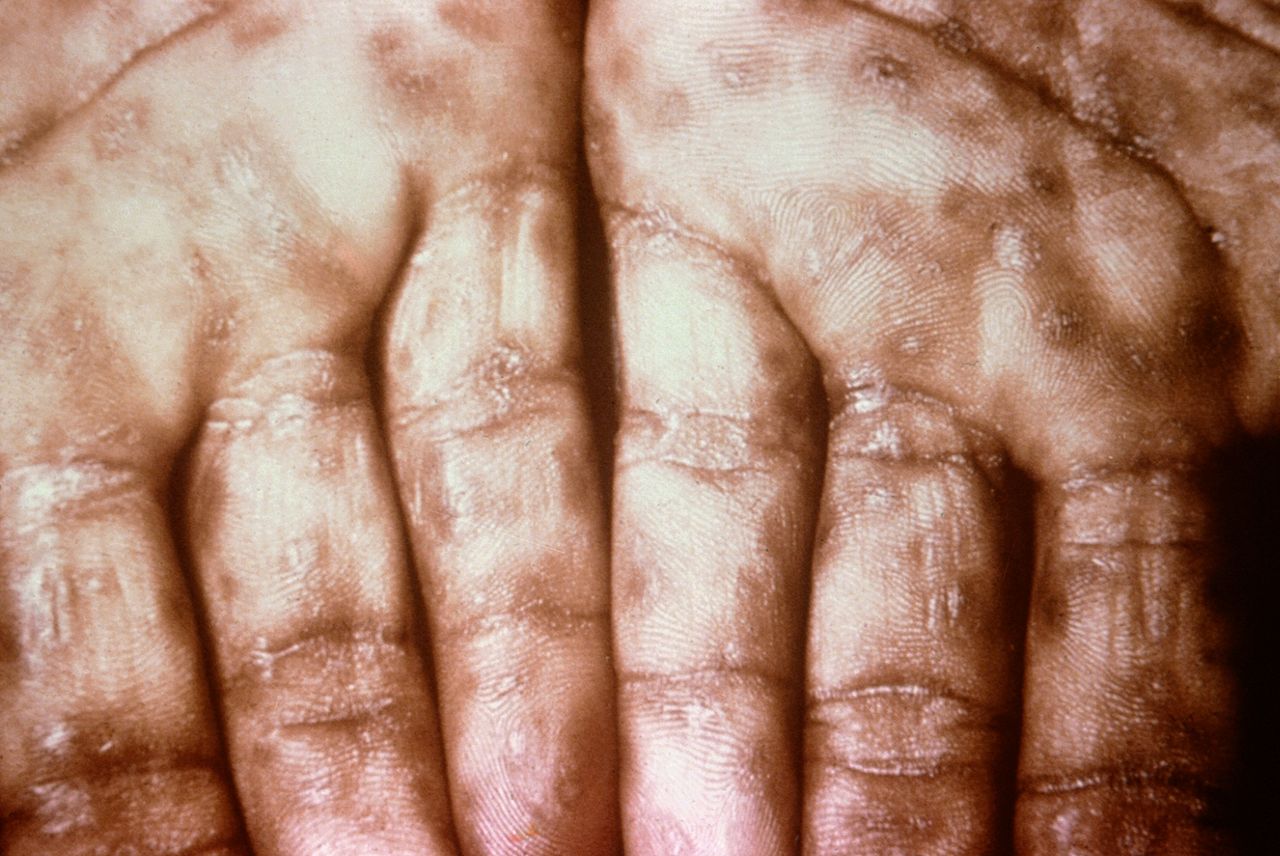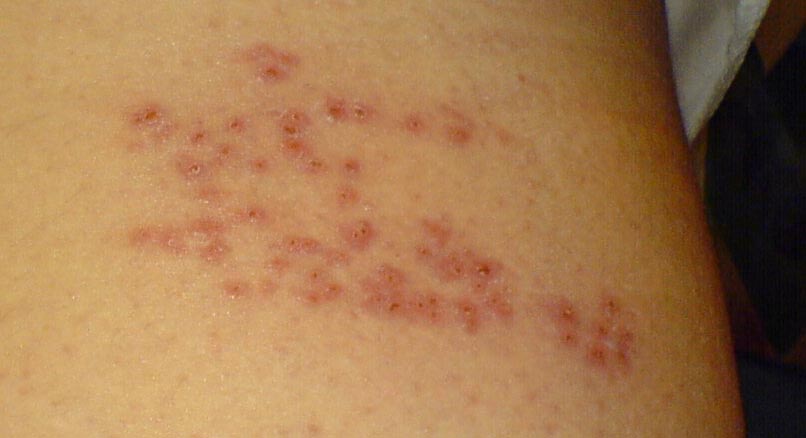 Skin rashes are incredibly common, although they’re usually not a diagnosis in and of themselves. Many rashes are the result of an infection — fungal, bacterial or viral — while others are due to exposure to irritants, such as plants or insect bites, allergic reactions to medications or foods or even exposure to everyday items like soap.
Skin rashes are incredibly common, although they’re usually not a diagnosis in and of themselves. Many rashes are the result of an infection — fungal, bacterial or viral — while others are due to exposure to irritants, such as plants or insect bites, allergic reactions to medications or foods or even exposure to everyday items like soap.
The term rash actually tells you little about its underlying cause and simply refers to skin inflammation and discoloration.
Most rashes are not dangerous and will disappear on their own without treatment. Sometimes, however, a rash may be a signal of a serious underlying problem that needs immediate treatment. According to Mayo Clinic dermatologist Lisa A. Drage, MD:
“Many people don’t understand that skin rashes can be important clues to serious diseases … Although most rashes are not life-threatening, some must be treated seriously. A dermatologist is trained to tell which rashes require more extensive medical testing and treatment.
… There is a separate side of dermatology where we take care of people who are in reality seriously ill, but often come to a physician simply with a persistent rash.”
If you have a mild rash that gets better within a few days, you probably don’t need to worry. Over-the-counter options like the proteolytic enzymes in Heal-n-Soothe may reduce itching and speed healing of common skin rashes like atopic dermatitis,[i] as they work systemically to fight the underlying inflammation that is causing the rash.
However, if you notice any of the more dangerous skin rashes noted below, it’s a sign that you need to seek medical attention right away.
Dangerous Skin Rashes: Top 6
6. Syphilis
Syphilis is a sexually transmitted disease that first appears as a small painless bump, which may be confused for an ingrown hair. It then progresses into a non-itchy body rash that may appear over your entire body, in just a few places or on the palms of your hands and soles of your feet. (Not everyone with syphilis develops a rash or symptoms at all.)
Syphilis is easily treated in the early stages, but if left untreated it may lead to serious complications that may not appear until decades later. In the latent and late stages of untreated syphilis, it may cause paralysis, numbness, blindness, organ damage and death.
5. Lupus Erythematosus
Lupus is an autoimmune disease in which your immune system attacks its own cells, leading to inflammation and tissue damage. While its causes are unknown, it’s thought to be linked to genetic, environmental and hormonal factors. Lupus, which is much more common in women than in men, may lead to a butterfly-shaped rash on your forehead and cheeks.[ii]
If you develop such a rash, especially in combination with achy joints and fatigue, see your health care provider. Lupus is a chronic condition that may affect your skin, joints, kidneys, lungs, nervous system and other organs.
4. Meningococcal Disease
A dark purple rash often occurs in the later stages of meningococcal disease, when the bacteria has entered your bloodstream and may be causing damage to your blood vessels and bleeding into your skin and organs. Meningococcal disease is caused by the bacterium Neisseria meningitidis, while about 10 percent of people carry this bacteria in the back of their nose and throat with no signs of disease, it can invade your body and lead to meningitis, an infection of the membrane covering your brain and spinal cord, leading to serious complications or death.[iii]
The bacteria can also cause a bloodstream infection, and that is what the dark purple rash may signal.
3. Toxic Shock Syndrome
Toxic shock syndrome is a life-threatening complication of a bacterial infection, caused by Staphylococcus aureus (staph) bacteria or toxins produced by group A streptococcus (strep) bacteria. Although it has long been associated with the use of superabsorbent tampons among women, the condition may also occur following a skin wound or surgery.
Toxic shock syndrome may result in a sunburn-like rash that occurs on your palms and soles, often along with a sudden high fever, low blood pressure and headache. You should seek medical care immediately, as toxic shock syndrome can progress rapidly, causing shock, kidney failure and death.[iv]
2. Rocky Mountain Spotted Fever (RMSF)
 This disease, caused by the tick-borne bacteria Rickettsia rickettsii, may be characterized by a fine non-itchy rash that starts on your arms and legs and may also affect the palms of your hand and soles of your feet (especially in combination with a fever and headache). About 90 percent of people with RMSF develop some type of rash, although some do not develop it until later as the disease advances.
This disease, caused by the tick-borne bacteria Rickettsia rickettsii, may be characterized by a fine non-itchy rash that starts on your arms and legs and may also affect the palms of your hand and soles of your feet (especially in combination with a fever and headache). About 90 percent of people with RMSF develop some type of rash, although some do not develop it until later as the disease advances.
Treatment is most successful if started in the first few days of illness, which is why it’s important to get help immediately. As the disease progresses, the rash may turn into red to purple spots.
Rickettsia rickettsia infects the endothelial cells that line your blood vessels. Early treatment can lead to a full recovery but if the disease progresses it can lead to bleeding or clotting in the brain, loss of circulation in extremities (requiring amputation), neurological deficits, organ damage and death.[v]
1. Shingles
A red blistering rash that is extremely painful may be a sign of shingles, an infection with the varicella zoster virus (the same virus that causes chickenpox). Singles is a skin rash that typically develops on one side of your face or body, sometimes in a single stripe. It will blister and scab over within seven to 10 days, and clear up within two to four weeks.
In some cases, people will have severe pain in the area where the rash appeared, even after it has cleared up, a condition known as post-herpetic neuralgia (PHN). The pain may be debilitating and persist for weeks, months or years. In rare cases shingles may lead to complications such as vision loss, pneumonia, brain inflammation or death.[vi]
Remember, if your rash is unusual and persistent, see a health care provider to rule out any serious underlying causes. But in most cases rashes are the result of skin inflammation that will resolve on its own, or potentially faster if you use Heal-n-Soothe.





Hi Mr.Cannon,
I didn’t find the skin rash in the list that I have. The rash I have is called psoriasis. I also want you to know I have already received my free bottle of HNS. I felt the benefit of it the first day I took it.
We’ve used heal n soothe before for various aches etc but right now with the Cdn. $ so very low @ about $0.63 US, anything coming from USA is just cost prohibitive. For the shipping charges on a “free” bottle I can buy similar products up here. But thanks. I still read your health info.
good info. sam